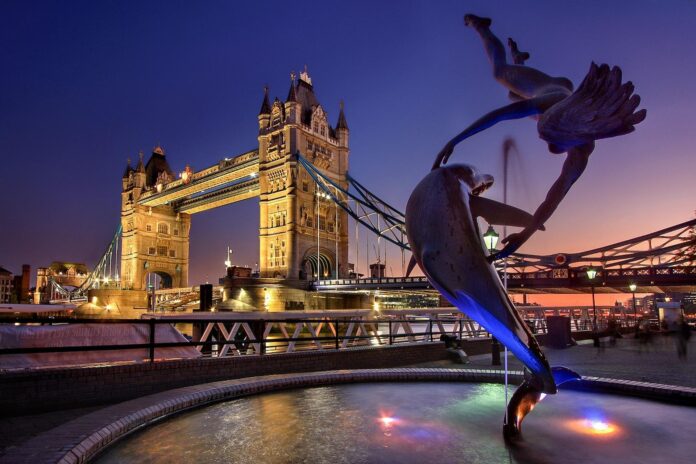Discover London’s rich history and vibrant culture with this local guide to the top 10 must-see landmarks. From world-famous sites like the Tower of London and Buckingham Palace to hidden treasures like Leadenhall Market and the Sky Garden, explore the best of what the city has to offer. Whether you’re a first-time visitor or a seasoned traveller, these iconic and lesser-known gems promise an unforgettable experience.
London is a city where history meets modernity, offering a rich tapestry of landmarks, from iconic attractions to hidden gems known only to locals. Whether it’s your first time visiting or you’re a seasoned traveller, this guide will take you through London’s must-see sights, giving you a mix of world-famous attractions and lesser-known spots that shouldn’t be missed.
Tower of London: A Step Back in Time
The Tower of London, standing tall by the River Thames, is one of the city’s most famous landmarks. This fortress has been at the heart of British history for over 1,000 years as a royal palace, prison, and home to the Crown Jewels.
- History: Built by William the Conqueror in 1078, the Tower has been home to kings and queens and even housed prisoners, including Anne Boleyn, before her execution.
- Unique Features: Don’t miss the famous ravens—legend has it that if they ever leave, the kingdom will fall.
- Visiting Tips: Arrive early to avoid long lines, especially to see the Crown Jewels. Guided tours led by the iconic Beefeaters offer fascinating stories about the tower’s dark history.
Buckingham Palace: The Royal Residence
No visit to London is complete without seeing Buckingham Palace, the official residence of the British monarch. It’s one of the most recognised buildings in the world and the centrepiece of royal celebrations.
- History: Buckingham Palace has been the residence of the British monarchy since Queen Victoria took the throne in 1837.
- Unique Features: The Changing of the Guard ceremony is a must-see, offering a glimpse into British pomp and pageantry.
- Visiting Tips: The Palace is only open to visitors during the summer when the Queen is away, so plan your visit accordingly. Arrive 45 minutes early for the best view of the Changing of the Guard.
British Museum: A Journey Through Time
Home to one of the world’s largest collections of art and antiquities, the British Museum offers a deep dive into human history. This museum is packed with treasures from the Rosetta Stone to Egyptian mummies.
- History: Opened in 1759, the British Museum was the first national public museum in the world, and entry is still free today.
- Unique Features: The museum has over 8 million objects, with highlights including the Elgin Marbles and the Egyptian Room.
- Visiting Tips: The museum can be overwhelming, so start with the highlights and then explore further based on your interests. Weekdays are less crowded, especially in the morning.
Leadenhall Market: A Hidden Gem
If you’re looking for something off the beaten path, Leadenhall Market is a hidden gem. This beautifully preserved Victorian marketplace is a feast for the eyes and an excellent spot for a bite to eat.
- History: Originally a meat and poultry market in the 14th century, Leadenhall Market was rebuilt in the 19th century with stunning architecture.
- Unique Features: Fans of the Harry Potter films will recognise Leadenhall as the location for Diagon Alley.
- Visiting Tips: Visit in the early afternoon when the market is less crowded, and take time to explore its quirky shops and cafes.
Sky Garden: London’s Best Free View
For breathtaking views of London’s skyline, head to the Sky Garden. Located at the top of the Walkie-Talkie building, this indoor garden offers panoramic views of the city—free of charge.
- History: Opened in 2015, the Sky Garden quickly became one of London’s most popular attractions for its combination of nature and views.
- Unique Features: The 360-degree view includes landmarks like the Shard, the Gherkin, and St. Paul’s Cathedral.
- Visiting Tips: Tickets are free but must be booked in advance. Plan your visit around sunset for spectacular views.
Big Ben: London’s Timekeeper
Big Ben, housed in the Elizabeth Tower, is one of London’s most iconic landmarks. Although often referred to as Big Ben, the name refers to the bell within the tower.
- History: The tower was completed in 1859 and has been chiming the hours since, except during maintenance.
- Unique Features: The clock tower’s Gothic Revival architecture is a masterpiece and a symbol of London.
- Visiting Tips: Although the tower is closed for renovations, you can still enjoy great views from across Westminster Bridge.
The Shard: Reach New Heights
The Shard is the tallest building in London, standing 95 stories high and offering unparalleled city views. Its modern design contrasts beautifully with the historic landmarks around it.
- History: The Shard, designed by architect Renzo Piano, opened in 2012 and became a modern London symbol.
- Unique Features: The viewing platform on the 72nd floor provides stunning views, and you can see for miles on a clear day.
- Visiting Tips: Tickets can be pricey, but the views are worth it. Alternatively, book a table at one of the restaurants for a meal with a view.
Covent Garden: A Hub of Activity
Covent Garden is the place for street performances, boutique shopping, and a taste of London’s vibrant arts scene. It’s always buzzing with activity and has something for everyone.
- History: Originally a fruit and vegetable market in the 17th century, Covent Garden is now a hub for shopping, dining, and entertainment.
- Unique Features: Street performers put on daily shows in the central piazza, adding to the lively atmosphere.
- Visiting Tips: Visit the market in the morning to avoid the crowds, and stop by the nearby Royal Opera House for a behind-the-scenes tour.
St. Paul’s Cathedral: A Masterpiece of Architecture
Designed by Sir Christopher Wren, St. Paul’s Cathedral is one of London’s most magnificent landmarks. Its towering dome has dominated the skyline since the 17th century and remains a symbol of resilience.
- History: Built after the Great Fire of London in 1666, St. Paul’s has been the site of many significant events, including the wedding of Prince Charles and Princess Diana.
- Unique Features: Climb the 528 steps to the Whispering Gallery for an exceptional acoustic experience, or continue to the top for panoramic views.
- Visiting Tips: Arrive early to explore the cathedral’s interior without the crowds. Don’t miss the crypt, where British heroes like Admiral Nelson are buried.
Kew Gardens: A Botanical Oasis
For a peaceful escape from the hustle and bustle of the city, head to Kew Gardens, one of the most famous botanical gardens in the world. Spanning over 300 acres, it’s a perfect place to relax and reconnect with nature.
- History: Founded in 1759, Kew Gardens is home to the world’s most extensive living plant collection.
- Unique Features: The Palm House, a stunning Victorian glasshouse, is a highlight, as is the Treetop Walkway, which takes you high above the gardens.
- Visiting Tips: Take your time exploring the vast gardens, and if you’re a plant lover, don’t miss the Herbarium and the Temperate House.
Final Thoughts
London is a city brimming with history, culture, and architectural wonders. From the historic Tower of London and Buckingham Palace to modern marvels like the Shard and Sky Garden, this city offers something for everyone. While getting caught up in the big-name attractions is easy, explore some hidden gems, like Leadenhall Market and Kew Gardens, for a more local experience.
Whether it’s your first or tenth visit, these top 10 landmarks will leave you unforgettable memories of London’s charm and diversity.




























